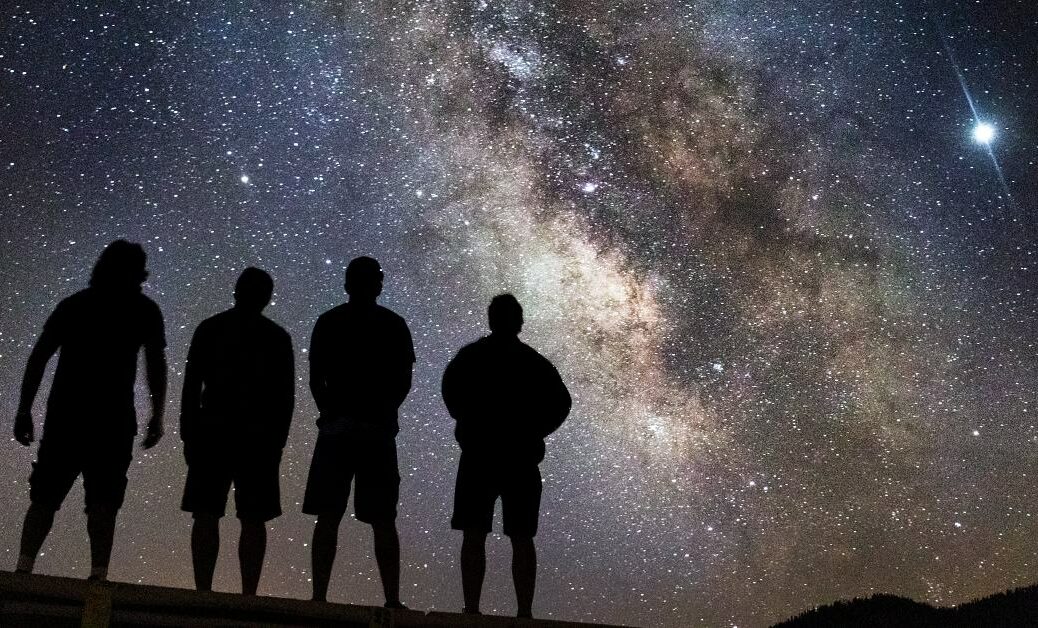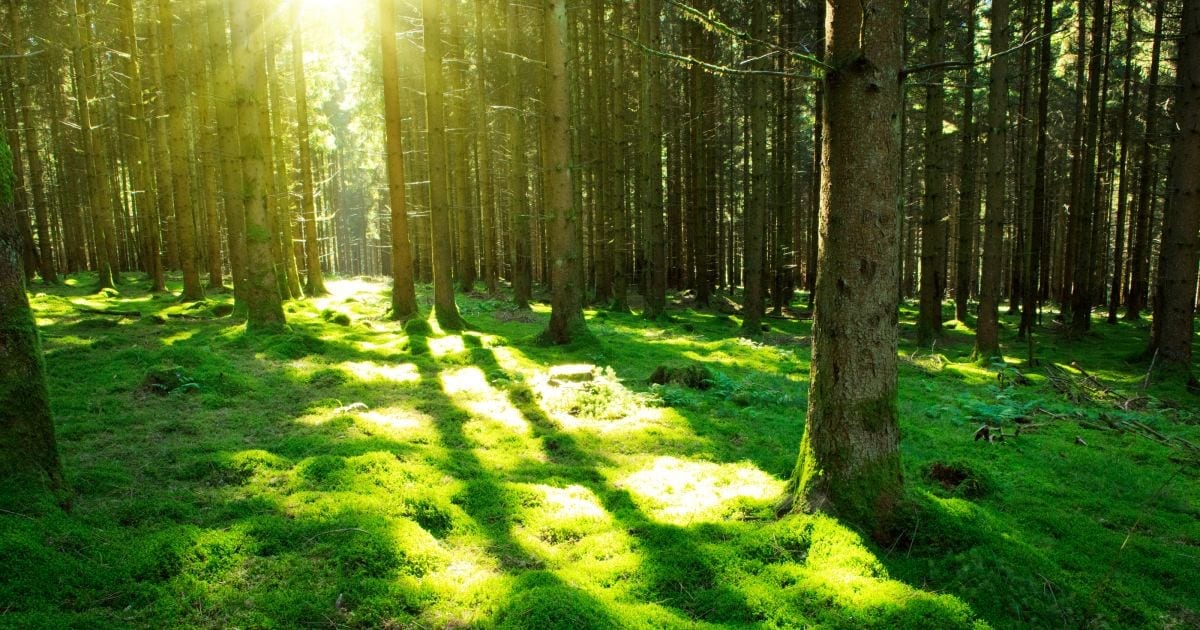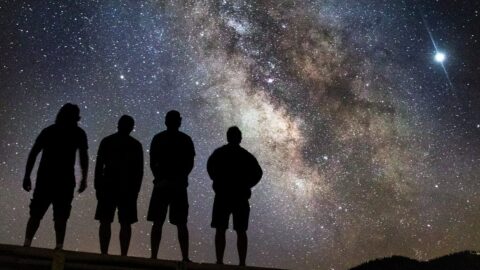In an age where the night sky is increasingly veiled by artificial light, Dark Sky Parks provide welcome refuge for stargazers, nature enthusiasts, and anyone yearning to reconnect with the cosmos. These special reserves, designated for their exceptionally clear and starry nights, offer a sanctuary from the pervasive glow of urban life. Dark Sky Parks are more than just spots for astronomy; they are vital for preserving the natural beauty and rhythm of the night sky, a treasure that has inspired humans for millennia.
With a growing interest in astro-tourism, people from all walks of life are seeking destinations where the night sky dazzles in its full glory, untainted by light pollution. This renewed appreciation for natural night skies is not just a trend among astronomers; it reflects a deep-seated human need to gaze upon the stars and ponder the mysteries of the universe. Dark Sky Parks cater to this need, providing a space where the Milky Way can be seen with the naked eye, and celestial wonders come alive, making them a paradise for anyone fascinated by the night sky.
Understanding Dark Sky Parks
The Concept of a Dark Sky Park
Dark Sky Parks are designated areas recognized for their pristine night skies and minimal light pollution. These parks provide a haven for experiencing the natural wonders of the night sky, as seen from Earth. The concept revolves around preserving these areas from the adverse effects of artificial lighting, enabling not just clear stargazing opportunities, but also protecting nocturnal environments. They serve as a reminder of the unspoiled night sky that our ancestors once regularly witnessed.
Criteria for Designation by the International Dark-Sky Association (IDA)
To be designated as a Dark Sky Park by the International Dark-Sky Association (IDA), an area must meet stringent criteria. These include the quality of starry nights and nocturnal environment, and successful implementation of lighting management policies aimed at minimizing light pollution. The IDA also assesses the park’s commitment to public education about the night sky and light pollution, along with the consistency of darkness conservation efforts. This designation is more than an accolade; it’s a commitment to maintaining the delicate balance between the night environment and modern society.
Importance of Dark Sky Conservation
The conservation of dark skies is crucial for several reasons. For astronomers, both amateur and professional, dark skies are essential for observing and studying celestial phenomena. Light pollution severely hampers our ability to observe stars, planets, and other cosmic bodies, limiting our understanding of the universe.
Beyond astronomy, dark skies have a significant impact on wildlife. Many animal species rely on the natural patterns of light and darkness for navigation, foraging, and reproduction. Artificial light can disrupt these patterns, leading to adverse ecological consequences.
Moreover, preserving dark skies is also important for human health. Excessive exposure to artificial light at night, especially blue light, can disrupt human circadian rhythms, affecting sleep patterns and overall health. Dark Sky Parks not only offer a refuge for stargazers but also serve as a reminder of our intrinsic connection to the natural rhythms of day and night.
In preserving these areas, Dark Sky Parks play a pivotal role in maintaining the ecological balance, contributing to scientific research, and enhancing our appreciation of the natural world.
The Threats to Our Night Skies
Light Pollution: Causes and Consequences
Light pollution, the excessive or misdirected artificial light that illuminates the night sky, is a growing environmental concern. It’s primarily caused by urban development; streetlights, buildings, and vehicles collectively emit a vast amount of light, much of which is unnecessary or used inefficiently. This artificial glow not only obscures our view of the stars but also disrupts ecosystems and affects human health. The consequences of light pollution extend beyond just losing the aesthetic beauty of a starry night. It leads to a phenomenon called ‘skyglow’, which can alter natural patterns of light and dark in ecosystems, affecting the behavior of nocturnal animals and interfering with astronomical research.
Impact of Urbanization and Modern Lighting
Urbanization has been a significant contributor to the increase in light pollution. As cities expand, the demand for artificial lighting grows, often without consideration for its environmental impact. Modern lighting, especially LED lights, while energy-efficient, often emits a bright, blue-rich light that increases skyglow and has a more significant impact on circadian rhythms in humans and wildlife. The rapid growth of urban areas often leads to poorly planned and excessive use of artificial light, exacerbating the problem of light pollution globally.
Global Efforts to Reduce Light Pollution
Recognizing the adverse effects of light pollution, there are now global efforts aimed at reducing its impact. These include the promotion of responsible lighting policies, public awareness campaigns, and the development of new lighting technologies that minimize skyglow. Organizations like the International Dark-Sky Association work tirelessly to advocate for the protection of dark skies through education, policy development, and community outreach. Many cities and countries have begun to implement ‘dark sky’ ordinances that regulate outdoor lighting to reduce glare and skyglow. Additionally, there’s a growing trend towards the adoption of ‘smart’ lighting systems that adjust the intensity and color of city lights based on the time of night and need, significantly reducing unnecessary light emissions.
These efforts signify a growing recognition of the value of dark skies, not only for astronomical research but also for preserving our planet’s natural heritage and the well-being of all its inhabitants.
The Unique Appeal of Dark Sky Parks
The Experience of Visiting a Dark Sky Park
Visiting a Dark Sky Park is a journey into the natural wonders of the night. Away from the hustle and bustle of city life, these parks offer a serene and awe-inspiring environment where the night sky reveals its true beauty. As darkness falls, the sky transforms into a canvas sprinkled with countless stars, visible planets, and the milky swath of the Milky Way. It’s an experience that reconnects visitors with the vastness of the universe and offers a rare, unobstructed view of celestial wonders that are often hidden by urban light pollution.
Benefits of Experiencing Natural Darkness and Stargazing
Experiencing natural darkness in a Dark Sky Park has several benefits. For stargazers, whether amateur or professional, it’s an opportunity to observe astronomical phenomena in optimal conditions. The absence of artificial light allows for clearer and more detailed observations of stars, constellations, and other celestial bodies. For those seeking a deeper connection with nature, these parks provide a tranquil setting for reflection and relaxation. The experience of stargazing can be meditative and humbling, offering a respite from the fast pace of modern life and a chance to ponder the mysteries of the universe.
Educational and Recreational Aspects
Dark Sky Parks are not only about stargazing; they are centers of education and recreation. Many of these parks offer guided tours, night sky programs, and workshops that educate visitors about astronomy, nocturnal wildlife, and the importance of dark sky conservation. These programs are often interactive and suitable for all ages, making them an excellent way for families and educational groups to learn about the science and beauty of the night sky. For photography enthusiasts, these parks present a perfect setting for capturing stunning nightscapes and practicing astrophotography. The recreational aspect of Dark Sky Parks is complemented by the sense of community and shared experience among visitors, as they gather under the stars to witness the night in its purest form.
Visiting a Dark Sky Park is an enriching experience that combines recreation, education, and the simple pleasure of gazing at the stars. It’s an opportunity to step away from the illuminated world and immerse oneself in the natural beauty and tranquility of the night sky.
Activities in Dark Sky Parks
Overview of Typical Activities Available
Dark Sky Parks offer a range of activities that cater to both the avid astronomer and the casual stargazer. One of the most popular activities is guided night sky tours. These tours are usually led by knowledgeable guides or astronomers who provide insights into the constellations, planets, and other celestial phenomena. For a more hands-on experience, telescope viewings are organized, allowing visitors to gaze deeper into the cosmos and witness distant stars and galaxies up close.
Photography workshops are another highlight, attracting both amateur and professional photographers looking to capture the stunning night sky. These workshops teach techniques for night photography, such as long exposure and proper camera settings to best capture the stars and the Milky Way.
Other activities can include educational talks and presentations about astronomy, conservation, and the importance of dark skies. Some parks also offer special events such as meteor shower viewings, constellation identification sessions, and even yoga under the stars, combining relaxation with the beauty of the night sky.
Best Practices for Visitors
When visiting Dark Sky Parks, there are best practices that visitors should follow to ensure they have the best experience while also contributing to the conservation efforts of these areas:
Minimize Light Pollution: Use red lights instead of white flashlights, as red light is less disruptive to night vision and wildlife. Keep the use of artificial light to a minimum.
Ideal Times for Visits: Plan your visit around the new moon phase when the sky is darkest for the best stargazing conditions. Also, consider visiting during meteor showers or astronomical events for a more spectacular experience.
Respect the Environment: Stay on designated paths and trails to protect the natural habitat. Remember that these parks are also home to nocturnal wildlife.
Prepare Appropriately: Nights can be cold and dark, so dress warmly and bring necessary supplies like water, snacks, and a map of the park.
Educate Yourself: Learn about the night sky before your visit. Understanding basic constellations and celestial events can enhance your experience.
Share the Experience: Bring friends or family to share in the wonder of the night sky. Respect other visitors’ experience by keeping noise to a minimum.
By following these practices, visitors can enjoy a memorable and respectful visit to Dark Sky Parks, enriching their understanding and appreciation of the night sky and the importance of preserving these unique environments.
Dark Sky Parks in the United States
The United States is home to some of the most magnificent Dark Sky Parks in the world, each offering unique experiences for stargazers and nature lovers. These parks not only provide stunning views of the cosmos but also play a crucial role in preserving the natural night environment through effective lighting management and educational initiatives. Let’s explore some of the notable Dark Sky Parks across the U.S., highlighting their distinctive features and programs.
Big Bend National Park, Texas
Big Bend is famed for having the least light pollution of any national park in the lower 48 states. Its remote location offers exceptionally clear views of the Milky Way, meteor showers, and a myriad of stars and constellations, making it a paradise for stargazers.
Death Valley National Park, California/Nevada
Recognized as one of the hottest and driest places in North America, Death Valley offers a dramatic desert landscape for nighttime viewing. Its vast, open skies are perfect for observing astronomical phenomena and make for an unforgettable stargazing experience.
Great Basin National Park, Nevada
Nestled in the mountainous region of Nevada, Great Basin is renowned for its clear, dark skies. The park’s high elevation and isolated location provide unspoiled views of the night sky, complemented by the ancient bristlecone pines and diverse cave systems.
Joshua Tree National Park, California
Joshua Tree stands out for its surreal landscape of rugged rock formations and twisted, spiky Joshua trees. The park’s desert environment ensures minimal light pollution, offering a spectacular backdrop for stargazing and night photography.
Kissimmee Prairie Preserve State Park, Florida
This park is a haven for wildlife enthusiasts and stargazers alike. Its sprawling prairies provide a perfect dark sky environment, allowing for clear views of celestial wonders and an escape from the bright lights of nearby cities.
Central Idaho Dark Sky Reserve, Idaho
As one of the largest Dark Sky Reserves in the world, this area offers a breathtaking nocturnal landscape. The reserve’s commitment to preserving natural darkness provides an unparalleled opportunity to observe the night sky in its full, unobstructed grandeur.
Chaco Culture National Historical Park, New Mexico
Chaco Culture Park is not just about the night sky; it’s a journey into the past. The park protects the ancient ruins of the Chacoan people, whose history is deeply intertwined with astronomy. The dark skies here illuminate the same stars that guided ancient civilizations.
Cherry Springs State Park, Pennsylvania
Cherry Springs is celebrated for its exceptionally dark skies, which have made it a favorite among amateur astronomers and photographers. Its accessible observing field offers a 360-degree view of the night sky, free from obstructions.
Natural Bridges National Monument, Utah
Famous for its natural stone bridges, this park was the first to be designated as a Dark Sky Park by the IDA. The blend of its natural geological wonders and crystal-clear skies creates an unforgettable stargazing experience.
Black Canyon of the Gunnison National Park, Colorado
Known for its steep, dramatic canyons, Black Canyon offers more than just breathtaking daytime views. At night, the park reveals a spectacular display of stars against the silhouette of the canyon walls, providing a unique stargazing setting.
Each of these parks showcases the beauty and importance of preserving our natural night skies. Their commitment to dark sky conservation provides not only spectacular views of the cosmos but also a reminder of the need to protect these precious resources.
These parks are renowned for their commitment to preserving the natural night environment by implementing good outdoor lighting and promoting night sky education and appreciation. Be sure to visit their respective websites for more details on stargazing events, night sky programs, and the best times to visit.
Prominent Dark Sky Parks Around the World
The Dark Sky Parks concept is a global movement, with stunning locations around the world dedicated to preserving the natural night sky. Here are a few prominent international Dark Sky Parks that have gained recognition for their exceptional stargazing conditions and commitment to dark sky preservation:
Galloway Forest Park, Scotland
As the UK’s first Dark Sky Park, Galloway Forest Park offers some of the darkest skies in Europe. Visitors here are often awestruck by the clear views of the Milky Way, meteor showers, and even the Northern Lights on occasion.
Kerry International Dark-Sky Reserve, Ireland
Located on the Iveragh Peninsula in County Kerry, this reserve is renowned for its breathtaking night skies, free from light pollution. The reserve not only provides stellar views of the stars but also supports a rich variety of wildlife that thrives in its dark environment.
Aoraki Mackenzie International Dark Sky Reserve, New Zealand
Situated in the South Island of New Zealand, this reserve encompasses Aoraki Mt. Cook National Park and the Mackenzie Basin. The skies here are so clear and dark that it’s possible to see phenomena like the Magellanic Clouds, which are satellite galaxies to the Milky Way.
International Dark Sky Reserve of Pic du Midi (RICE), France
This dark sky site is unique as it combines astronomy with heritage. Located in the French Pyrenees, it not only offers incredible night sky views but also houses an observatory that has been part of astronomical research for more than a century.
NamibRand Nature Reserve, Namibia
One of Africa’s first Dark Sky Reserves, NamibRand is a private nature reserve in southern Namibia. It boasts some of the darkest skies ever measured, offering a spectacular view of the southern hemisphere’s stars and constellations.
Mont-Mégantic International Dark Sky Reserve, Canada
Located in Quebec, this reserve is a leader in both night sky preservation and public education. The reserve’s ASTROLab and observatory provide visitors with an educational yet breathtaking stargazing experience.
These URLs will direct you to the respective websites for more detailed information about each Dark Sky Park, including their unique features, visiting information, and any special events or programs they offer.
Conclusion
Exploring Dark Sky Parks offers a glimpse into the vastness of the cosmos and a symbol of our shared celestial history. These sanctuaries of the night sky enchant with their untouched beauty and have inspired countless generations. A journey to these parks promises an encounter with the universe as it has existed for eons, prompting reflection on humanity’s place amidst the stars.
Dark Sky Parks hold importance far beyond the immediate wonder they instill. They stand as critical resources for astronomical research, the health of our planet’s ecosystems, and the well-being of people everywhere. In times where light pollution encroaches upon the night, these parks serve as bastions of darkness, preserving the quiet nocturnal tableau that cities have left behind, underscoring the importance of safeguarding this natural legacy.
Individuals have a crucial role in the ongoing effort to maintain the pristine skies these parks protect. Supporting Dark Sky Parks through visits helps to bolster their mission and spread consciousness about their cause. Actions taken in everyday life, like reducing light pollution from homes and promoting responsible community lighting, contribute to a larger impact.
Step into the captivating darkness of these parks to experience the night as it was meant to be seen. There, the Milky Way stretches across the sky, and each shooting star invites a silent wish. Witnessing the ancient constellations places one in a lineage that cherishes and upholds the dark, where the brilliance of the stars can truly be appreciated. Embrace this darkness, for it is the canvas upon which the light of the stars is most vividly painted.
- 30 Environmental Activities to Feed Your Mind, Body & Soul - December 19, 2023
- Exploring the Wonders of Dark Sky Parks: A Stargazer’s Paradise - December 19, 2023
- Biodiversity Loss – A Crisis in the Making - December 12, 2023










